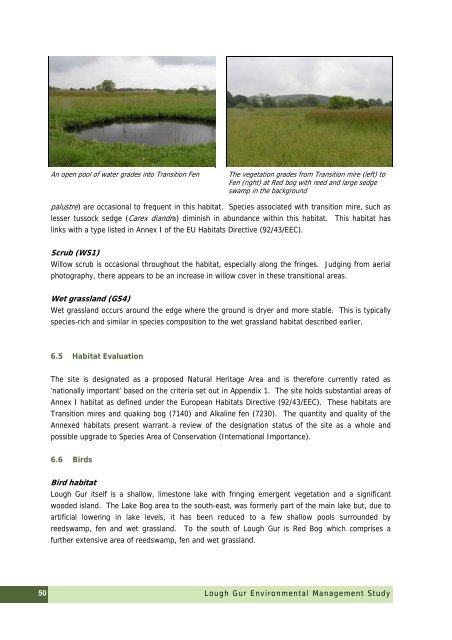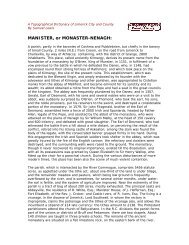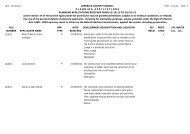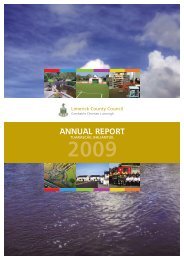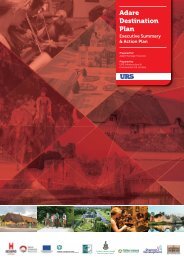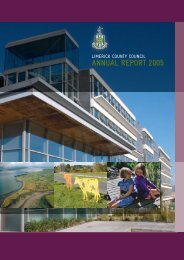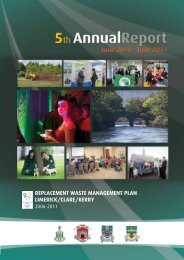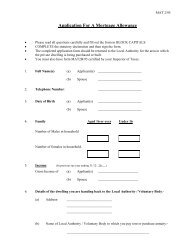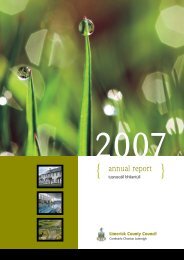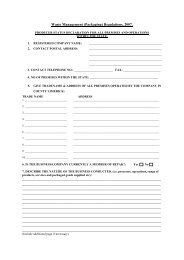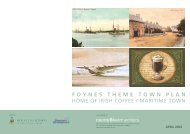Lough Gur Environmental Management Study February 2009
Lough Gur Environmental Management Study February 2009
Lough Gur Environmental Management Study February 2009
You also want an ePaper? Increase the reach of your titles
YUMPU automatically turns print PDFs into web optimized ePapers that Google loves.
50<br />
An open pool of water grades into Transition Fen The vegetation grades from Transition mire (left) to<br />
Fen (right) at Red bog with reed and large sedge<br />
swamp in the background<br />
palustre) are occasional to frequent in this habitat. Species associated with transition mire, such as<br />
lesser tussock sedge (Carex diandra) diminish in abundance within this habitat. This habitat has<br />
links with a type listed in Annex I of the EU Habitats Directive (92/43/EEC).<br />
Scrub (WS1)<br />
Willow scrub is occasional throughout the habitat, especially along the fringes. Judging from aerial<br />
photography, there appears to be an increase in willow cover in these transitional areas.<br />
Wet grassland (GS4)<br />
Wet grassland occurs around the edge where the ground is dryer and more stable. This is typically<br />
species-rich and similar in species composition to the wet grassland habitat described earlier.<br />
6.5 Habitat Evaluation<br />
The site is designated as a proposed Natural Heritage Area and is therefore currently rated as<br />
‘nationally important’ based on the criteria set out in Appendix 1. The site holds substantial areas of<br />
Annex I habitat as defined under the European Habitats Directive (92/43/EEC). These habitats are<br />
Transition mires and quaking bog (7140) and Alkaline fen (7230). The quantity and quality of the<br />
Annexed habitats present warrant a review of the designation status of the site as a whole and<br />
possible upgrade to Species Area of Conservation (International Importance).<br />
6.6 Birds<br />
Bird habitat<br />
<strong>Lough</strong> <strong>Gur</strong> itself is a shallow, limestone lake with fringing emergent vegetation and a significant<br />
wooded island. The Lake Bog area to the south-east, was formerly part of the main lake but, due to<br />
artificial lowering in lake levels, it has been reduced to a few shallow pools surrounded by<br />
reedswamp, fen and wet grassland. To the south of <strong>Lough</strong> <strong>Gur</strong> is Red Bog which comprises a<br />
further extensive area of reedswamp, fen and wet grassland.<br />
<strong>Lough</strong> <strong>Gur</strong> <strong>Environmental</strong> <strong>Management</strong> <strong>Study</strong>


